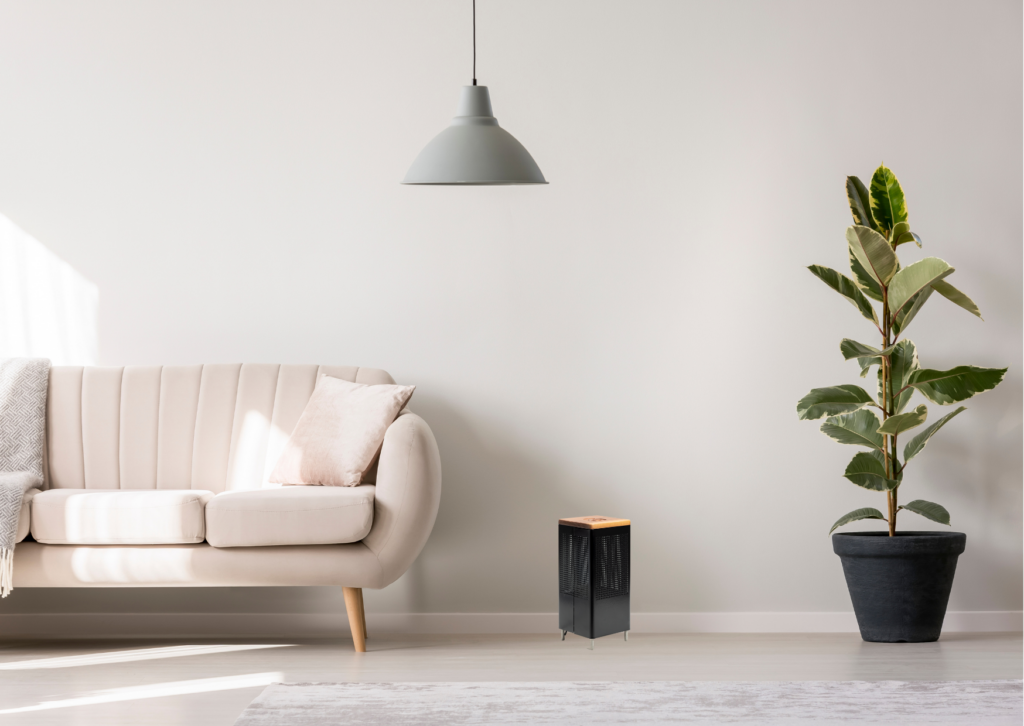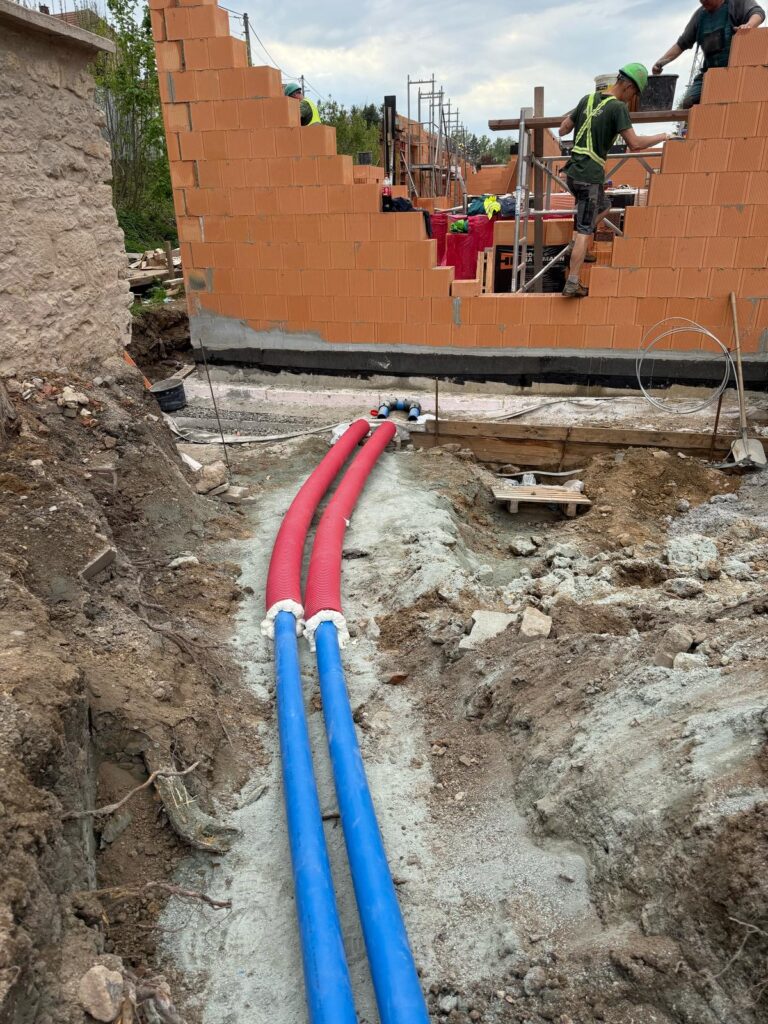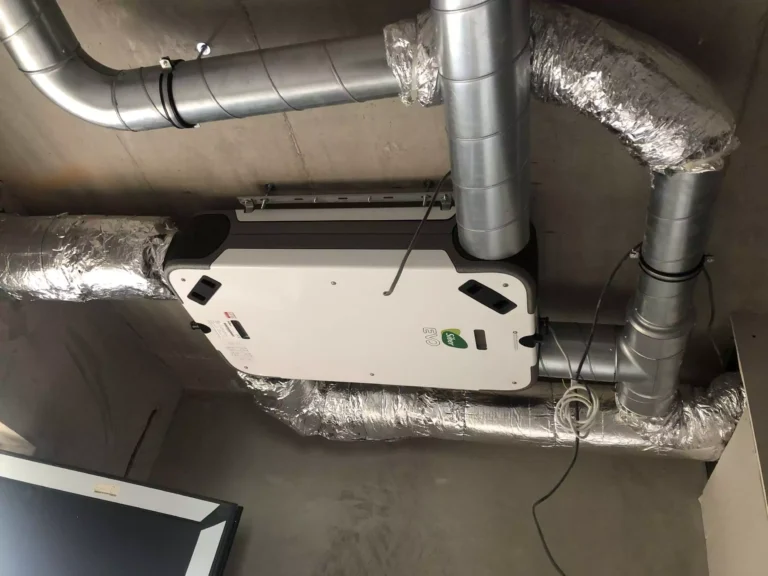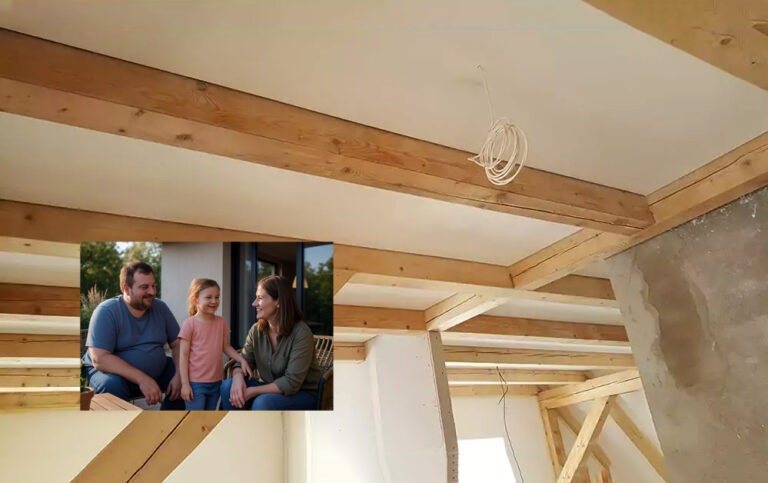Vliv vnitřního ovzduší na naše zdraví
Zdravý životní styl je pojem, který na nás doléhá z mnoha stran skloňovaný všemi pády. Většina z nás si ho dává nejrychleji do souvislosti se zdravým stravováním, pravidelným pohybem a dostatečným odpočinkem. K dodržování zásad zdravého životní stylu nás nejčastěji vede vize zlepšení fyzické kondice a s ní související vyšší odolnost vůči nemocem. Přesto je v naší populaci trendem stále se zvyšující počet osob náchylných na různá respirační chronická onemocnění či alergiků, a to často mezi těmi, pro které není zdravý životní styl pouze teoretický pojem. Logicky musí přijít otázka co potom děláme špatně? Málokdo si v této souvislosti uvědomí, že na vině by mohla kvalita ovzduší vnitřního prostředí, ve kterém se dlouhodobě pohybujeme a která má na naše zdraví nezanedbatelný vliv. Je ale možno vnitřní ovzduší ve svém okolí zlepšit?
Věděli jste, že…
- v průběhu jediného dne se každý z nás nadechne až 20 tisíckrát?
- průměrně člověk spotřebuje více jak 15 kg vzduchu, což je několikanásobně více než množství vody a potravin za stejnou dobu?
Reakce organismu
Na úvod si pojďme problematiku kvality ovzduší lépe vysvětlit. O informace jsme požádali doc. Dr. Ing. Zdeňka Pospíchala, soudního znalce a zkušeného odborníka v oblasti životního prostředí a technických systémů.
Ovzduší je nejdůležitější složkou životního prostředí, neboť pro život vzduch potřebujeme trvale. Význam jeho čistoty je více jak zřejmý. Týká se to jak venkovního ovzduší, tak i ovzduší vnitřního, tj. ovzduší v našich obydlích, v dopravních prostředcích a na pracovištích.
V ovzduší jsou obsaženy různé znečišťující látky. Škodliviny jsou z více než 90 procent zachyceny v nosní dutině. Organismus na ně reaguje rýmou, v horším případě dojde k zánětu horních cest dýchacích. Na vdechnutí látek hmotné povahy reaguje organismus různě podle jejich velikosti. S částicemi o velikosti nad 10 mikrometrů si organismus poradí lépe. Obvykle se zachytí v horních cestách dýchacích a člověk je vykašlává, vysmrkává nebo je se slinami spolkne. V žaludku, případně v játrech, jsou následně eliminovány.
Na naše zdraví mají horší vliv menší částice, které jsou součástí především polétavého prachu. Ten se dostává do dolních cest dýchacích či proniká až do plicních sklípků, kde může způsobit dlouhodobá, často chronická onemocnění.
Dlouhodobá expozice znečištěnému ovzduší s sebou přináší zvýšenou úmrtnost obyvatelstva žijícího ve městech na choroby srdečně cévní a respirační. Odhaduje se, že respirační choroby jsou původcem cca 25 tisíc z celkového ročního počtu úmrtí. V přímé návaznosti je zkrácení délky života, výskyt chronického zánětu průdušek, snížení plicních funkcí u dětí i dospělých. Tedy zhoršení kvality života. Přibývají důkazy o vlivu expozicí škodlivinami na vznik cukrovky II. typu.
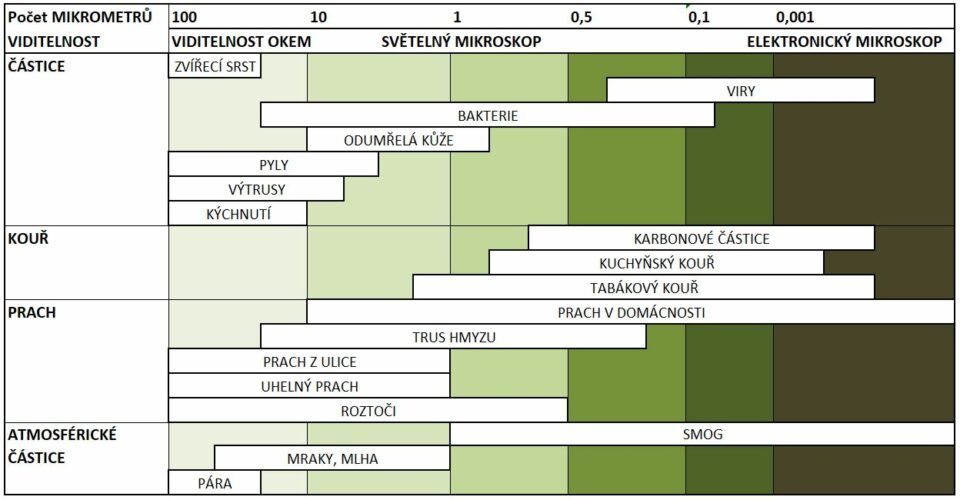
Problematika vnitřního ovzduší
Podíváme-li se na zvýšené znečištění vnitřního ovzduší, je způsobeno zejména dvěma hlavními změnami, dotýkajícími se interiérů budov. Jednak se v důsledku rostoucích cen energie ve výstavbě a provozu budov projevuje snaha zabránit tepelným ztrátám omezením přirozeného větrání okny a tedy používáním klimatizace a řízeného větrání, jejichž důsledkem je většinou kumulace škodlivin. Zároveň se v budovách stále více používají chemické látky, a to v nových konstrukčních materiálech, v nábytku či v užívaných chemických čisticích a úklidových prostředcích. V současnosti přitom pobýváme ve vnitřním prostředí až 80 procent denní doby a vystavujeme tak svůj organismus zátěži, se kterou se neumí vyrovnat. Tato skutečnost se projevuje nárůstem takzvaných civilizačních chorob. Jde především o alergie, astma, onemocnění dýchacích cest, cévní potíže a rakovina.
Otevřený venkovní prostor je nasycen ionizovanými částicemi vzduchu. Zatímco však venku je poměr záporných a kladných iontů v podstatě vyrovnaný a tedy optimální pro náš organismus, v typickém městském nedostatečně větraném bytě násobně převažují ionty kladné, které jsou pro organismus samostatně nevhodné. Pro lepší představu je možno uvést příklad, kdy vzduch v lese po bouřce obsahuje až 500 tisíc záporných iontů, zatímco v městském bytě jich bude přibližně pouze 50. Kladné ionty dokáží při vysoké koncentraci vniknout do plic, dále do krve a jejím prostřednictvím do celého organismu, kde mohou vyvolávat nepříznivé reakce jako uvolňování serotoninu a histaminu. Zvýšená hladina serotoninu může snížit kapacitu plic a schopnost těla absorbovat kyslík. S tímto stavem přichází zdravotní potíže typu migréna, alergické reakce, vznětlivost, bolesti v krku, kašel a další. Zvýšení hladiny histaminu se může projevit bolestmi srdce, alergiemi, sennou rýmou, nevolností, nespavostí.
O kvalitě vnitřního ovzduší si můžeme rozhodnout sami
Koncepční úprava a celkové zlepšení životního prostředí a tím i venkovního ovzduší je programem dlouhodobým a my jako jednotlivci ho příliš neovlivníme. Uzavřený interiér – tedy vnitřní ovzduší – lze však významně zlepšit za použití techniky prakticky okamžitě, což potvrzuje soudní znalec Zdeňek Pospíchal. Řada jím osobně provedených průzkumů dokazuje, že vhodným řešením pro zlepšení vzduchu v interiéru jsou kvalitní čističky vzduchu, které nám mohou pomoci zbavit se zdravotních, zejména dýchacích potíží, alergických reakcí a únavy.
V rámci průzkumů byly použity ionizační bezfiltrové čističky společnosti GeoCore, které ze vzduchu ve vnitřním prostředí dokázaly odstranit prachové částice obsahující sloučeniny arsenu, kadmia, olova, niklu, manganu či chromu (více info viz rámeček). Všechny uvedené prvky mají jedno společné – a to negativní vliv na naše zdraví. Podíváme-li se na další kovy zachycené bezfiltrovou ionizační čističkou – nejsou z hlediska zdravotního dopadu hodnoceny, neboť jejich dopad je minimální. Hovoříme například o titanu, vanadu, železu, kobaltu, zinku, selenu a mědi.
| Bezfiltrová čistička umí zachytit: |
| Arsen – je přítomen v ovzduší následkem spalovaní pevných paliv, v zimním období se projevil vyšší záchyt na lamelách čističky vzduchu |
| Kadmium – lze konstatovat vliv spalování pevných paliv i odpadů v domácích topeništích |
| Olovo – v ovzduší je zdravotně méně významná škodlivina |
| Nikl – vyskytuje se ve venkovním prostředí prakticky všude |
| Chrom – vyskytuje se v ovzduší rozdílně v průběhu ročních období a zejména v průmyslově nezatížených lokalitách a to v nejjemnější frakci – velikosti částic |
Jak funguje bezfiltrová ionizační čistička?
Nejvýznamnější schopností bezfiltrové ionizační čističky BION Fit Spot je vyrovnávání poměru kladných a záporných iontů v ovzduší prostřednictvím tvorby záporných iontů. Pro lepší představu – převahu kladných iontů v místnosti způsobuje například počítač. BION Fit Spot v takovém případě doplní vzduch o zdraví prospěšné záporné ionty a tím přispěje k vytvoření vnitřního ovzduší, které je kvalitou srovnatelné s přírodním prostředím.
Ionizace výrazně zlepšuje kvalitu vzduchu, je zdraví prospěšná, eliminuje výskyt plísní, virů a bakterií, odstraňuje ze vzduchu prach a další alergeny čímž přirozeně čistí vzduch. Možná vás překvapí, že k tomu nepotřebuje žádné filtry. Jak tedy funguje? Ionizovaný vzduch na sebe naváže pevné částice ze vzduchu a při průchodu čističkou se tyto částice pevně zachytí na lamelách čističky. A pak je lze bezproblémově jednou za čas umýt. Pokud by vás zajímalo, zda ovzduší s větším množstvím záporných iontů je člověk schopen vnímat, stačí si vzpomenout, jak příjemné bývá venkovní ovzduší po bouřce. Další prostředí, kde najdete velké množství záporných iontů, jsou solné jeskyně nebo mořské pláže.
Pojďme žít zdravěji
Je zřejmé, že na problematiku zdravého životního stylu musíme pohlížet komplexně. Tedy nejen z pohledu dostatečného pohybu a vyvážené stravy, ale také kvality vnitřního ovzduší, ve kterém trávíme nejvíce času. Dobrou zprávou je, že všechny zmíněné oblasti jsme schopni individuálně ovlivnit a zlepšit. Pro některé je nutná pevná vůle a vytrvalost, pro zvýšení kvality vnitřního ovzduší stačí pořízení vhodného zařízení, které potřebnou práci vykoná za nás. Investice se nám časem bohatě vrátí například v podobě zlepšení dlouhodobých zdravotních problémů, o kterých jsme hovořili výše. A to za to přece stojí.
